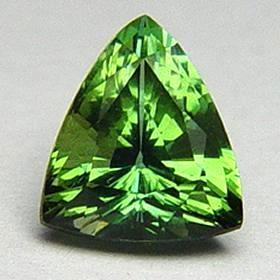|
Click on a letter above to view the list of gems. |
|
|
|
|
|
|
|
|
Zoisite |
|
| | |
| Discovered in 1805; IMA status: Valid (pre-IMA; Grandfathered). | ||
|
| ||
|
Chemistry |
| ||||||||||||||||||||||||||||||||||||
|
| |||||||||||||||||||||||||||||||||||||
|
Ca2Al3Si3O12(OH) | |||||||||||||||||||||||||||||||||||||
|
|
[Calcium Aluminum Silicate Hydroxide] | ||||||||||||||||||||||||||||||||||||
|
|
| ||||||||||||||||||||||||||||||||||||
|
Molecular Weight: |
454.36 gm | ||||||||||||||||||||||||||||||||||||
|
|
|
|
Classification |
|
|
| |
|
Silicates | |
|
8/C.23-100 | |
|
|
9 : SILICATES (Germanates) |
|
Related to: |
Epidote Group. The orthorhombic dimorph of Clinozoisite. The only orthorhombic member of the Epidote Group. |
|
|
|
|
Crystal Data |
|
|
|
|
|
Crystals prismatic, to 10 cm, typically deeply striated and poorly terminated; columnar to compact, massive. |
|
|
None |
|
|
|
|
|
Physical Properties |
|
|
|
|
|
[010] Perfect, [100] Imperfect |
|
|
Uneven, Conchoidal |
|
|
Brittle |
|
|
6.0 - 7.0 |
|
|
3.15 - 3.36 (g/cm3) |
|
|
Not Radioactive |
|
|
|
|
|
Optical Properties |
|
|
|
|
|
Green, Brown, Blue (Tanzanite), Purple, Pink, Rose red (Thulite), Gray |
|
|
Transparent to Translucent |
|
|
Vitreous, Pearly |
|
|
1.685 - 1.725 Biaxial ( + ) |
|
|
0.006 - 0.018 |
|
|
Relatively Strong |
|
|
X = pale pink to red-violet; Y = nearly colorless to bright pink or deep blue; Z = pale yellow to yellow-green |
|
|
|
|
|
Occurances |
|
|
|
|
|
Geological Setting: |
Typically in medium-grade regionally metamorphosed crystalline schists formed from igneous, sedimentary, or metamorphic rocks relatively high in calcium; in eclogites and blueschist facies metamorphic rocks. |
|
Common Associations: |
Albite, Biotite, Calcite, Garnet, Hornblende, Quartz |
|
Common Impurities: |
Fe, Mn, Mg, Cr, Ti, Ca, Na, V, Sr, H2O |
|
Type Locality: |
Prickler Halt, Ladinger Spitze Mt. - Speikkogel Mt. area, Saualpe Mts, Carinthia, Austria |
|
Year Discovered: |
1805 |
|
View mineral photos: | |
|
|
|
|
More Information |
|
|
|
|
|
| |
|
|
|
|
|
|
|
|||||||||||||||||||||||||||

